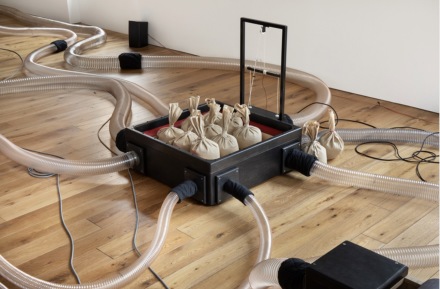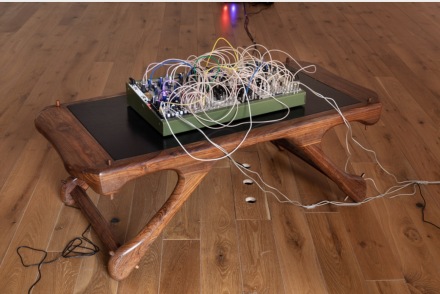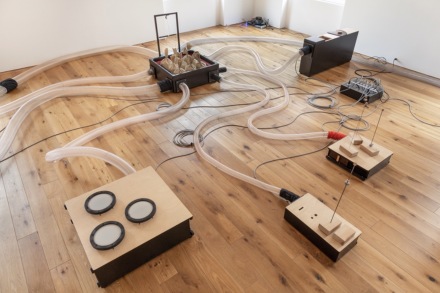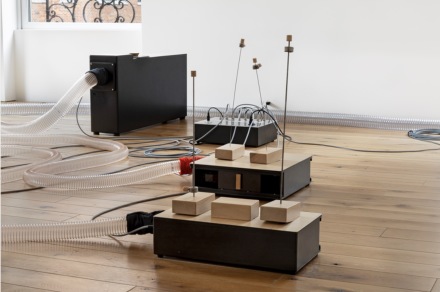
Tarek Atoui, Organ Within (Installation View), via kurimanzutto
Walking into Kurimanzutto’s cabinet space on New York’s Upper East Side, one is greeted with a slow, droning sonic atmosphere, a series of prickly overtones and delicate aural structures that emanate from a series of plastic tubes, fabric resonators and other materials spread across the floor in a seemingly haphazard fashion. This is artist Tarek Atoui’s ‘Organ Within,’ an installation of the artist’s “open sound laboratory” project.

Tarek Atoui, Organ Within (Installation View), via kurimanzutto
Presented as a sculptural object that engages numerous technologies in order to re-envision the spatialization, perception and performativity of the traditional organ, Atoui’s ‘Organ Within; is the result of his ongoing collaboration with instrument-makers Léo Maurel and Vincent Martial, and their research into historical church pipe organs, modular synthesizers, and the sonic experiences of deaf people.

Tarek Atoui, Organ Within (Installation View), via kurimanzutto
Presented here, the artist has turned this array of materials, distributed through the space and isolating various parts and functions of the traditional pipe organ, and opened them up to a collaborative performance with space itself. For this iteration of his installation, the artist has welcomed the synthesizer shop CONTROL and its array of modular synth experimenters, chief among them performer Robert Aiki Aubrey Lowe, to host and activate the work for a series of performances each Saturday at the gallery, while using the gallery during the week for research and practice, culminating with Atoui and CONTROL giving a final performance in the Rotunda of the Guggenheim Museum on June 27.

Tarek Atoui, Organ Within (Installation View), via kurimanzutto
Taken as a whole, the shifting and changing nature of the work, piloted by the capable hands of performers like Lowe, makes for a fascinating investigation on Atoui’s already strong concept. A work the distributes instrumentality through space, relying on various elements in a three-dimensional layout the deconstructs the traditional moving parts of the organ, also seems to investigate the agency of performer and object; how each element might lock into more nuanced conversations and elements, all while welcoming various hands to enter into the exchange. Turning an ever-evolving series of encounters into a shifting sonic fabric visitors can move in and out of at will, Atoui has created something of a living sonic organism in the gallery, one that will raise its head for the last time next week at the Guggenheim.
The show closes June 25th.
— C. Rhinehart
Read more:
Tarek Atoui at Kurimanzutto [Exhibtion Site]



